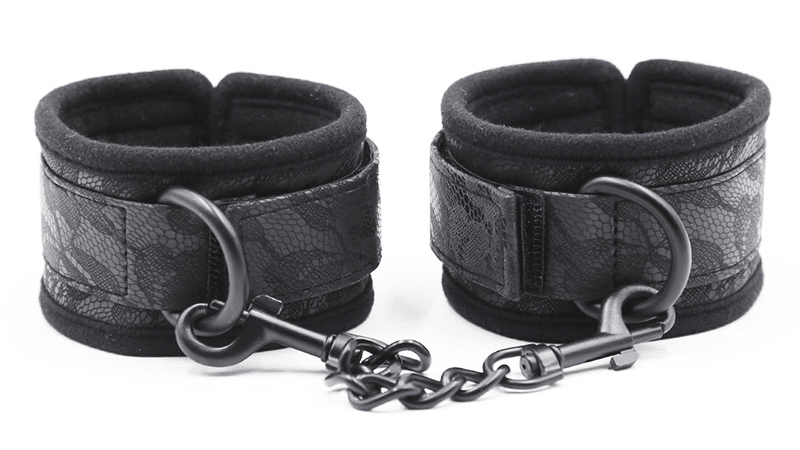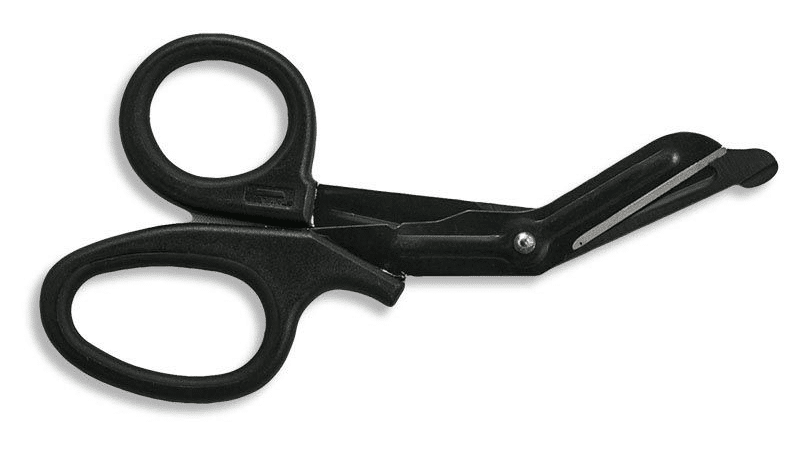Self bondage simply means you put yourself in a preferred restraint system, and the release is either up to you or another person. But since you’re alone for most/all of the event, this kind of play is usually classified as dangerous (since there isn’t anyone to help you out if an emergency pops up).
This beginner’s guide will take a look at, the ways you can restrain yourself, the dangers associated with this kind of play, safety steps, and other useful tidbits so you can enjoy the experience.
WAYS TO SELF RESTRAIN
I won’t get into specific self bondage techniques – just what exists and the pros vs cons.
ROPE – Shibari lovers will know the exquisite feeling of rope against the skin. There are plenty of body harnesses, leg ties, and other rigs that you can practice on yourself. However, the risks come from not knowing what you’re doing and possible (serious) injuries that will result from it.
CHAINS – Some people love their weight, feel, and sound of them. They are a bit more hardcore but very enjoyable. The problems with escape increase because they’re most difficult to get through than rope.
PLASTIC WRAP – Yep, the stuff you wrap your leftovers with. Instead of steak, you would wrap your body. It doesn’t breathe, so you’ll be sweating (dehydration risks). There is also the danger of suffocation if you do anything around your face. And, don’t be fooled by its flimsy nature, when you get some layers going, it’s tough to get out of.
TAPE – Mostly duct or electrical tape. It not only restraints but pulls at the skin – which adds an element of pain. It’s cheap but also a bitch to escape.
HANDCUFFS – From cheap to expensive, there are lots of choices. Some love the feel of metal against their body but remember these things can click too tight and possibly cut off circulation.

Velcro handcuffs with clip connections are great for beginners and easy to get out of.
LEATHER – It’s beautiful and comes in a huge variety of designs for all parts of the body. The downside is that it gets rather expensive (especially if you want nicer pieces).
LATEX – This isn’t exactly a self-bondage tool (it’s thin and easily ripped), but bodysuits can give the illusion of restricted movement. There are also obvious allergy problems some might have.
RUBBER – Similar concepts with latex, but fewer allergy issues. It’s also more durable, but far more expensive.
STRAIGHT JACKETS – These generally aren’t used for self-bondage (because the restraints are behind your back), but I included them anyway because if you keep your hands in front, it’s a viable option.
BAGS & SACKS – They can be roomy with lots of space (inside) to move or a body suit that make you look like a mummy. You could even go with a heavily weighted blanket if you’re completely new and want to start in the shallow end of the pool – there’s nothing wrong with that!
DANGERS OF SELF BONDAGE

BLOOD CIRCULATION – If anything is too tight, it will cut off blood flow and BAD things will happen.
SUFFOCATION – Autoerotic asphyxiation might appeal to some, but doing it alone can sometimes result in death.
TISSUE & NERVE DAMAGE – Especially with things like rope, you can end up with (minimum) serious bruising if things are not done correctly/safely.
DEHYDRATION – Anything that makes you sweat a lot, and leave yourself bound for too long, could be bad.
PANIC ATTACKS – Some people might laugh at this one, but DON’T. Sudden onsets of panic can lead to us moving in ways that could hurt us or making rash choices that could do harm.
HOW TO BE SAFER IN SELF BONDAGE

First – PLANNING IS YOUR BEST FRIEND! This includes research on the method you want to try (and when I say research, I mean extensive and exhausting).
Next, practice your preferred form on your legs for a short amount of time. When you are comfortable, slowly build up in time and (if you want) up to your waist and torso (arms still free).
Plan every aspect of the session – from how long and how you’ll escape and everything that could possibly go wrong (even your parents coming across the country for a surprise visit or raccoons picking your door locks and raiding your fridge).
EXAMPLE – If you like to do things in the dark, how will you get light if you really need it? What if the lamp breaks? Etc. Even if the solution is simple, you should think about it. So, if the event happens you’ll be calm and collected instead of scrambling for a solution.
Other things include collecting ALL your needed materials ahead of time – safety scissors, water, bolt cutters, timer, cell phone, etc. Another good thing is to tell a trusted friend to call you at a certain time (when your session has ended) to make sure you’re okay. If you don’t answer, you can have a plan or signal if they need to come over and help you if it’s an emergency.
KNOW YOUR LOCKS

TIMER – A box or lock box with a countdown timer (very useful) – even better if it’s plastic, so you can smash it if necessary.
PADLOCK – Make sure you have a million copies of the key (including handcuffs)
COMBINATION – Know the combination AND have it written down somewhere close by.
ELECTROMAGNET – These are a bit more complicated in practice and not for beginners.
EMERGENCY ESCAPE METHODS FOR SELF BONDAGE

Even if your hands are free, you need to know how to get out quickly if you need to. You don’t want to end up as one of those “self bondage gone wrong” stories.
EMERGENCY KEYS – Close by and easy to get to.
SCISSORS – The medical ones that you see in hospitals, because they’ll cut quite well, but the tips won’t stab you in the process.
BOLT CUTTERS – Necessary if you’re using chains.
PAINT KEY – Some people put the spare key in a paint can, so it will make a mess when you get it out – so if you REALLY need it, you won’t care about the mess. You can also use honey for something a bit more forgiving.
ICE – Have the key in ice. Can also be a “timed release” – test how long this takes beforehand! You can put it in bowls, stockings, bottles, etc.
A PERSON – As mentioned before, someone who knows what you’re doing and will be there quickly.
HOW TO HAVE EXTRA FUN DURING SELF BONDAGE
If you want to add another layer of yumminess to your immobility, you can add extra sensory elements.
- A blindfold that comes off easily – so you can focus on the sense of being bound
- Watching your favorite kind of porn
- Having someone watch you – yes, it still counts as self bondage
- If your hands are free you can sensually explore yourself
- Attach a hands-free, app-controlled sex toy. Pick your favorite pattern and let it drive you wild.
- Toys like this include Vibrating panties, magic wands (if they’re tied strategically in place), vibrating butt plugs, prostate massagers, nipple clamps, glans massagers, and love eggs (single or dual).
- Give someone else control. If the toy has long-distance control, you can hand over the reins to someone else and let them control the power and vibrations while you’re tied up!
Want to be able to do #5 and #6? Lovense has everything you need to have self bondage + sex toy fun. Click HERE to find your perfect match.

OTHER THINGS TO KEEP IN MIND

- You do NOT have to restrain your whole body if you don’t want to
- Have backups for your backups
- Don’t drink too much beforehand (or you’ll need to pee)
- Start in comfortable surroundings first
- Avoid your neck and head
- Start in light conditions before going to dark ones
- Always be aware of your body and possible numbness
- Don’t drink or take drugs while doing self-bondage
- Start slow and know your limits
- Decide on a time limit and stick to it
- Gags and being tied to fixed objects increase the risk
- Careful not to fall off anything and add extra damage
- Always follow SSSC and RISK practices
Remember, this is just a beginner’s guide. There’s LOTS more out there to learn and I encourage you to read as much as possible.
If you want more useful guides or articles, you might like these…
- Bondage Rope 101 – 12 Useful Tips and Extensive Rope Rundown
- BDSM Restraints 101 – Hogtied and Happy for Beginners
- BDSM Vacuum Beds for Beginners – Baby Steps Into Getting Sucked
Anything you want to add about self-bondage? Share in the comments!


